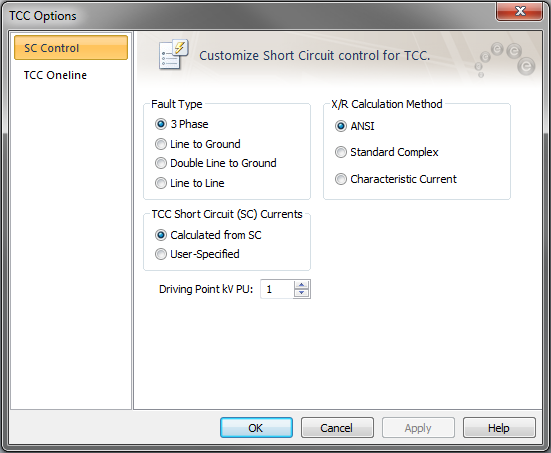 TCC Options from the TCC tab.
TCC Options from the TCC tab. TCC options can be used in the Coordination focus to select the type of fault, the short circuit values, the calculation type, and the output pictures in the TCC plots. When the TCC window is open, click  TCC Options from the TCC tab.
TCC Options from the TCC tab.

Figure 1: SC Control Tab of TCC Options Dialog Box
Note: If the system options are set to IEC-60909, the X/R Calculation Method area is not displayed.
Reference:
1 Parise G., A new approach to calculate the decaying AC contributions to short-circuit: the ‘characteristic’ currents method; IEEE Transactions on Industry Applications, Vol. 31, No. 1, January/February 1995.
The contents of the One-line Output tab of the TCC Options dialog box are the same as those described for Short Circuit Options dialog box. See One-line Output Tab or One-Line Output Tab (IEC) for more information.
| Coordination with PowerProtector™ | |
| One-line Output Tab |

|